J. J. Hagenaars
Evolving-to-Learn Reinforcement Learning Tasks with Spiking Neural Networks
Feb 24, 2022


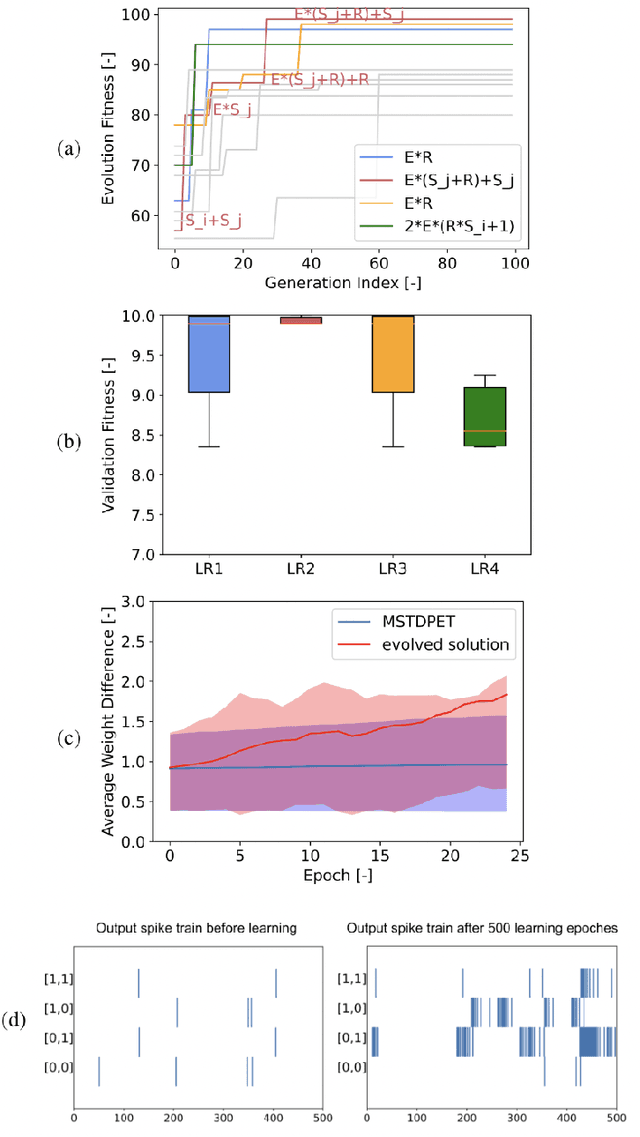
Abstract:Inspired by the natural nervous system, synaptic plasticity rules are applied to train spiking neural networks with local information, making them suitable for online learning on neuromorphic hardware. However, when such rules are implemented to learn different new tasks, they usually require a significant amount of work on task-dependent fine-tuning. This paper aims to make this process easier by employing an evolutionary algorithm that evolves suitable synaptic plasticity rules for the task at hand. More specifically, we provide a set of various local signals, a set of mathematical operators, and a global reward signal, after which a Cartesian genetic programming process finds an optimal learning rule from these components. Using this approach, we find learning rules that successfully solve an XOR and cart-pole task, and discover new learning rules that outperform the baseline rules from literature.
Evolved Neuromorphic Control for High Speed Divergence-based Landings of MAVs
Mar 06, 2020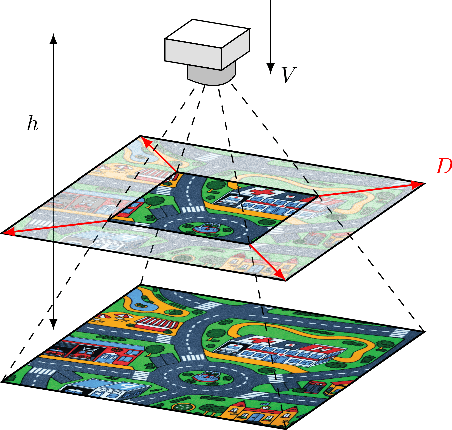
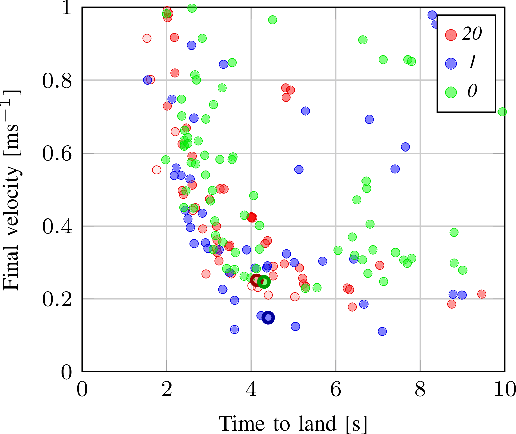
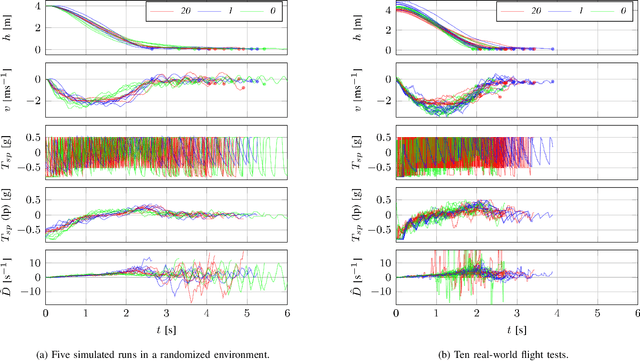
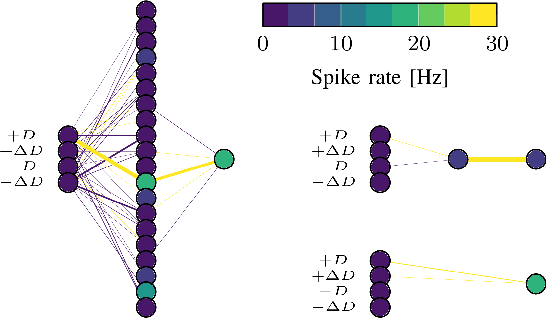
Abstract:Flying insects are capable of vision-based navigation in cluttered environments, reliably avoiding obstacles through fast and agile maneuvers, while being very efficient in the processing of visual stimuli. Meanwhile, autonomous micro air vehicles still lag far behind their biological counterparts, displaying inferior performance with a much higher energy consumption. In light of this, we want to mimic flying insects in terms of their processing capabilities, and consequently apply gained knowledge to a maneuver of relevance. This letter does so through evolving spiking neural networks for controlling landings of micro air vehicles using the divergence of the optical flow field of a downward-looking camera. We demonstrate that the resulting neuromorphic controllers transfer robustly from a highly abstracted simulation to the real world, performing fast and safe landings while keeping network spike rate minimal. Furthermore, we provide insight into the resources required for successfully solving the problem of divergence-based landing, showing that high-resolution control can potentially be learned with only a single spiking neuron. To the best of our knowledge, this is the first work integrating spiking neural networks in the control loop of a real-world flying robot. Videos of the experiments can be found at http://bit.ly/neuro-controller .
 Add to Chrome
Add to Chrome Add to Firefox
Add to Firefox Add to Edge
Add to Edge